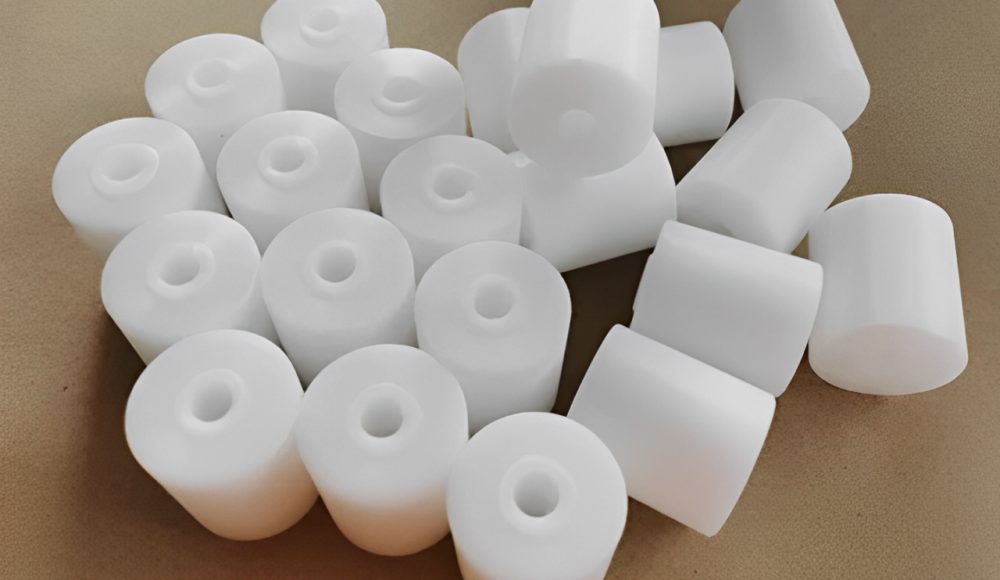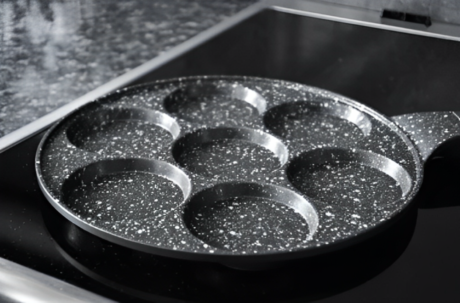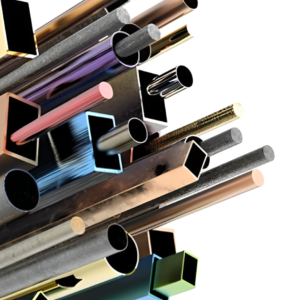Teflon is a synthetic chemical, and it is a form of carbon and fluorine atoms. It gives a nonreactive, nonstick, and quite frictionless surface. So, it has wide uses in cookware and other industrial applications. The main component that gives unique characteristics is PTFE (polytetrafluoroethylene). So, let’s discuss what PTFE and Teflon are, how they work, their composition, and their properties.
What is PTFE?
It is the short form of polytetrafluoroethylene, which is a polymer with large chains of monomers, i.e. tetrafluoroethylene. Its chemical formula is (C₂F₄)n, which means, it has a long chain of (C₂F₄). It has 2 carbon and 4 fluorine atoms, which are bound firmly. So, this arrangement helps it create a highly stable structure. Besides this, it has other properties as well;
- Heat Resistance: It can resist high temperatures even without degrading.
- Chemical Inertness: As its inner molecules are tightly bound, it does not react easily with other chemicals.
- Electrical Insulation: It is one of the excellent insulators against electricity.
What is Teflon?
Teflon is a brand recognized for its family of strong and frictionless substances that are commonly employed in cooking utensils as well as in other industries. Particularly essential as a synthetic characteristic of Teflon is PTFE or polytetrafluoroethylene, which helps impart unique characteristics to Teflon items. In addition to PTFE, the Teflon brand includes other fluoropolymers. They may include FEP (fluorinated ethylene propylene) and PFA (Perfluoroalkoxy alkanes).
What is the Other Term for Teflon?
The term that is mostly used for “Teflon” is PTFE. Because PTFE is the primary substance associated with Teflon products, However, it’s important to note that Teflon refers to a range of products that come under the Teflon brand, i.e. PTFE and other fluoropolymers. On the other hand, PTFE (Polytetrafluoroethylene) is specifically a chemical compound used in Teflon products. Note that, not all products of Teflon has pure PTFE
How Teflon is Produced?
So, the following is a description of how we can produce Teflon.
Manufacturing Process
The manufacturing of Teflon starts with the polymerization of tetrafluoroethylene (TFE) monomers. So, this process can be done using different polymerization methods. They may include;
- Suspension Polymerization: Here, a dispersing agent is used so TFE gas is allowed to polymerize in an aqueous medium. It results in granular PTFE.
- Emulsion Polymerization: In this method, TFE is polymerized in a water-based solution with surfactants. So, it can produce a fine powder or dispersion PTFE.
- Dispersion polymerization: It is similar to emulsion polymerization, but results in different particle sizes and distributions. So, it is suitable for coating applications.
Raw Materials and Synthesis
The most commonly used raw material for Teflon is tetrafluoroethylene (TFE). It is a gaseous monomer that polymerizes and makes PTFE. So, here is its synthesis process;
Synthesis Process
- Free-Radical Polymerization:The polymerization of TFE into PTFE includes a free radical, which means that polymerization starts using free radicals. These are unstable atoms or molecules with unpaired electrons and they cause the TFE molecules to link together. So, they can form long chains of PTFE.
- Chain Formation: Here, TFE molecules (C₂F₄) are repeatedly added to make a chain. They create a polymer with a high molecular weight.
- Stabilization and Processing: After polymerization, the PTFE polymer is stabilized and processed into various forms. These forms may include powders, granules, or dispersions.
What are the Different Types of Teflon?
Teflon has different types based on the PTFE composition. So, let’s discuss each type briefly;
1. Granular PTFE
It is a form of PTFE resin that is produced through suspension polymerization. It mainly uses granular PTFE in its composition. Besides this, it has quite strong properties. That is why. it is widely used for molding and machining applications. Moreover, the Granular PTFE can be compressed and sintered into various shapes, i.e. rods, tubes, and sheets.
2. Fine Powder PTFE
It is a type that is composed of PTFE with a very small particle size. It is mainly produced through emulsion polymerization. Fine powder PTFE is ideal for use as a lubricant and in high-performance applications. So, its small particle size helps it be used as an additive. So, it can improve wear resistance and reduce friction in other materials.
3. Dispersion PTFE
Here the PTFE is present in an aqueous dispersion and formed using emulsion polymerization. So, it has many uses in coatings and film applications. Additionally, it works as a liquid coating on various substrates. So, it may give a non-stick and protective layer.
4. Micro-powder PTFE
It consists of ultra-fine PTFE particles. They help increase wear resistance and reduce friction when used in coatings and lubricants. So, it has a wide scope of applications in addition to inks, paints, and coatings. So, it can improve their performance.
5. Film PTFE
This kind of Teflon may consist of thin layers of PTFE. It may result in formation due to skiving or extrusion. Besides this, it has excellent dielectric properties and chemical resistance so it has many uses in electrical insulation and as a barrier material. Moreover, it also has applications in packaging and for gaskets.
6. Expanded PTFE
Here, we usually stretch PTFE to create a porous structure. It is mainly used in filtration and sealing applications. Additionally, the expanded structure helps it increase its breathability and flexibility. Without compromising the chemical resistance and non-reactivity of PTFE.
Different Properties of Teflon
So, here are the different properties of Teflon;
- Non-stickiness: Teflon has non-stick properties that help it prevent materials from adhering to its surface. So, this property has a lot of applications in cookware and industrial applications. So, it can reduce friction and improve efficiency.
- High-Temperature Stability: Teflon can tolerate high temperatures, i.e. 260 °C (500 °F), without significant degradation. So, this property helps it maintain its integrity and performance in difficult, high-temperature environments.
- Low Friction: It has a low coefficient of friction. So, it makes it one of the slipperiest materials known. Additionally, this property reduces frictional resistance and wear. That is why, it is ideal for bearings, gears, and other mechanical components.
- Electrical Insulation: Teflon also shows good dielectric properties, so it is a wonderful electrical insulator. Moreover, it has wide applications in the electronics industry for insulating wires, cables, and other electrical components.
Applications of Teflon
So, here are the different applications of Teflon in different areas of life.
- Teflon Coating: They’ve various uses in many utensils for non-stick surfaces, on industrial machinery to avoid wearing, and on many electrical home appliances like iron which gives them a non-stick surface.
- Industrial Components:It plays an important role in seals, gaskets, and bearings, in particular because of its chemical incompatibility. It guarantees performance dependability in automotive and aerospace components, as well as within valves.
- Teflon Sheets:Self-lubricating Teflon shields against chemical attack for industrial coatings and is resistant to high voltages in electrical insulation.
- Medical Uses: Teflon coatings minimize the extent of wear between urgent and surgical instruments. Besides this, they also make elements for catheters biocompatible and secure.
- Automotive Applications:Teflon-coated fuel hoses offer the best solution for vehicle safety and performance through the provision of durable, flexible non-stick linings.
- Electrical Applications: The application of Teflon coats on the wires and the PCBs withstand high temperatures and prevent short-circuiting, hence providing the electronics the efficiency required by its usage.
What are the Advantages and Disadvantages of Teflon?
Here is a table that lists the major benefits and Drawbacks of Teflon
| Advantages of Teflon | Disadvantages of Teflon |
| Excellent non-stick properties | Environmental impact during production and disposal |
| High resistance to heat and temperature extremes | Potential release of harmful fumes at high temperatures |
| Chemical inertness, resistant to most chemicals | The initial cost of Teflon products can be higher than alternatives |
| Low friction coefficient, reducing wear and tear | It is stretchable by metal utensils, compromising non-stickiness |
| Electrical insulation properties | Concerns about potential health risks (e.g., PFOA exposure) |
| Versatile applications across various industries |
Not biodegradable |
| Biocompatible, suitable for medical implants (PTFE) |
Conclusion
In conclusion, Teflon is quite a unique material with several unique properties. These may include non-stickiness, chemical resistance, high-temperature stability, low friction, electrical insulation and biocompatibility. So, these properties make it a must-have material in diverse applications. However, its safe and effective use requires proper handling within temperature limits. Besides this, it is also important to raise awareness of its limitations and environmental impacts. Because overheating can release harmful fumes. Additionally, its production and disposal can cause environmental concerns. So, it is important to recycle it and properly dispose of it to avoid adverse effects. Contact us for more information.
Frequently Asked Questions?
Q1. What is Teflon and What are Its Primary Uses?
Teflon is a brand name for certain types of fluoropolymers. It helps provide a non-stick surface. Besides this, it has a wide scope of applications in the production of utensils, industrial equipment, and others.Teflon is a brand name, and PTFE is a specific type of plastic polymer that belongs to this brand.
Q2. What are the Major Advantages of Cooking on Teflon-coated Cookware?
Teflon-coated dishes and boilers also have a non-stick surface. So, it results in less use of oil in the food, and it is easy to clean.
Q3. Is Teflon Lethal for Daily Usage, Particularly for Cooking Utensils?
It’s important to note that Teflon is safe for use. But it requires proper handling in the right manner. So keep it away from heating or scratching the skin, as this causes the release of volatile substances.
Q4. Is Teflon Legal?
Yes, Teflon is legal. They also regulate the design and functioning of the chemical feedstock in its manufacture to make it safe and environmentally friendly.








